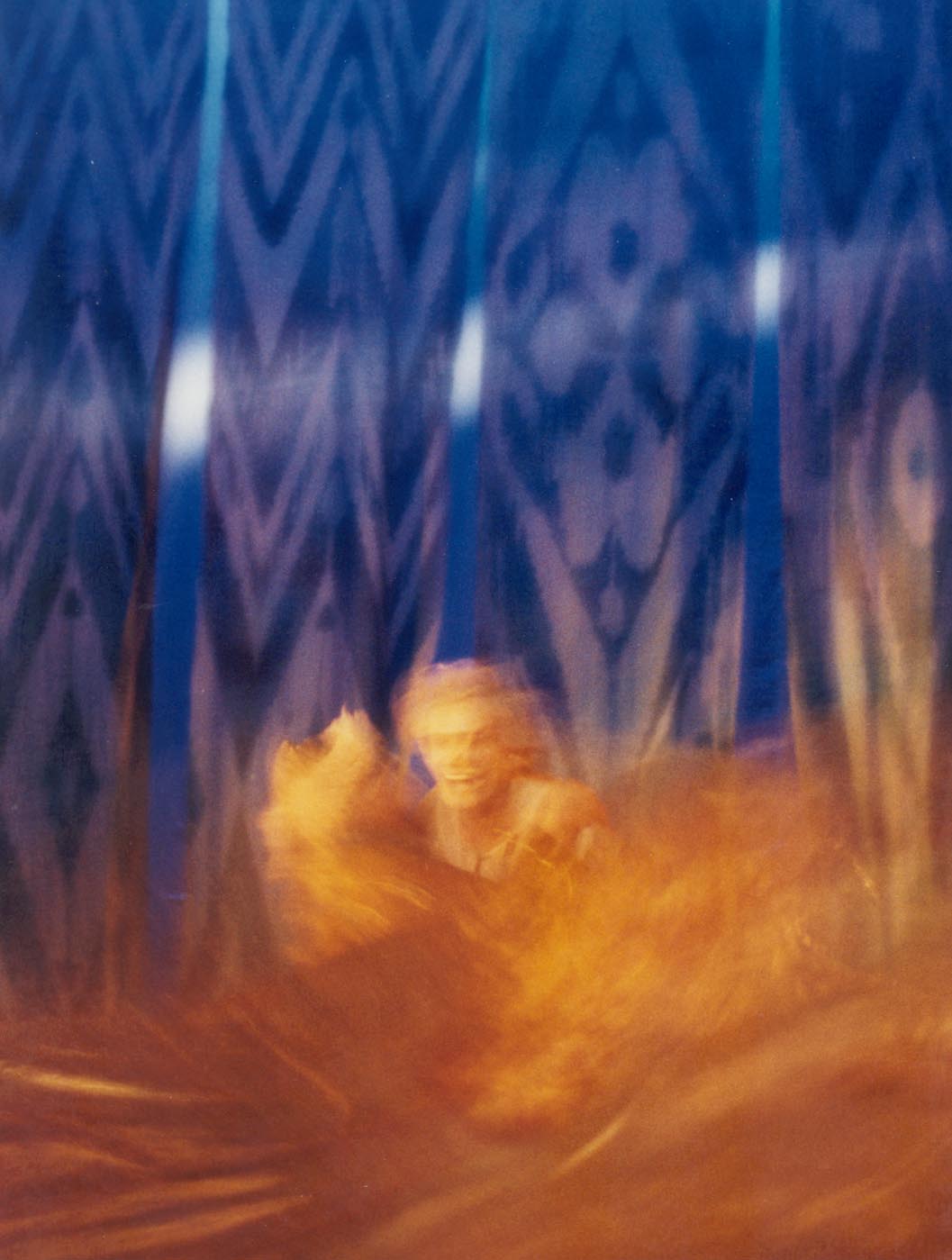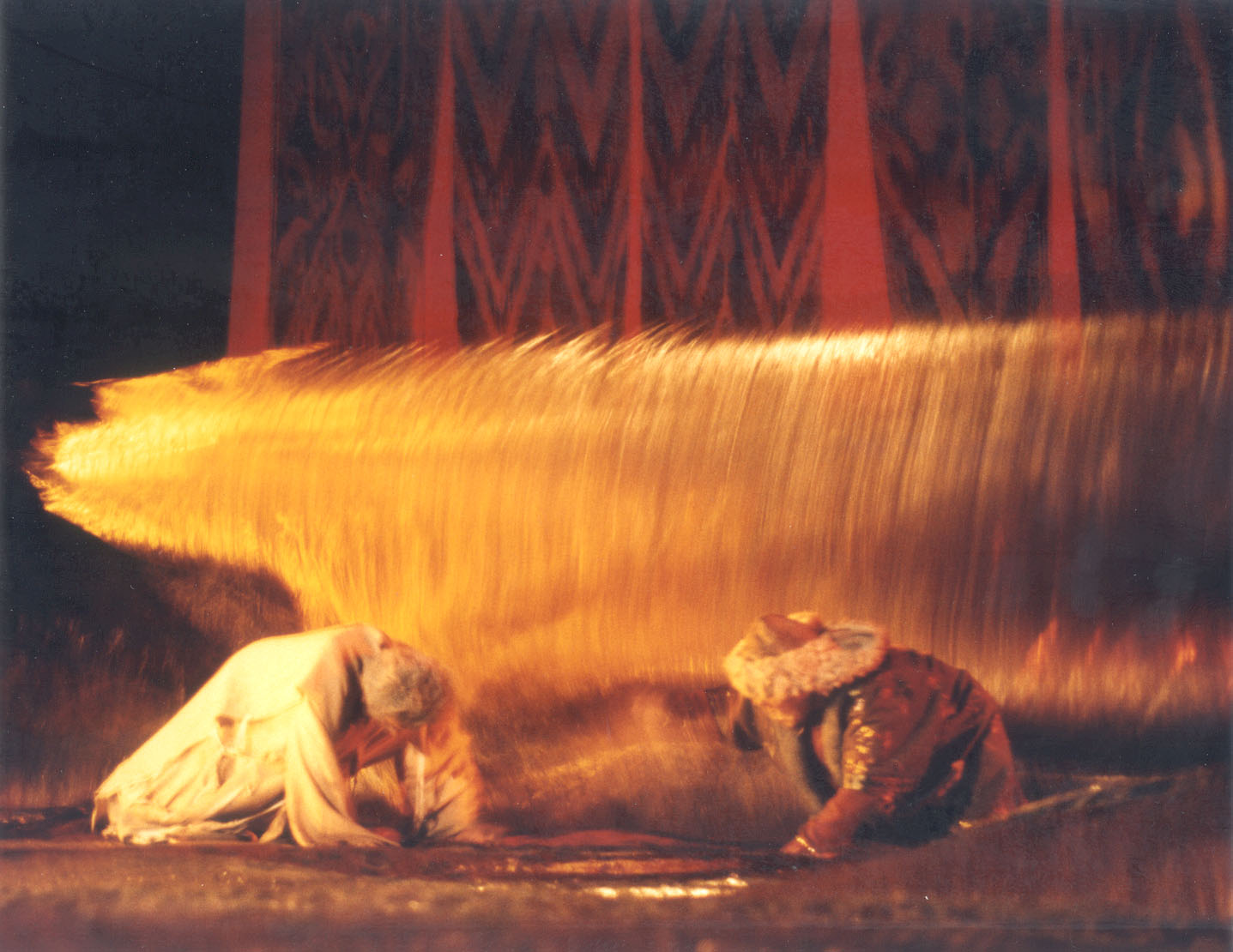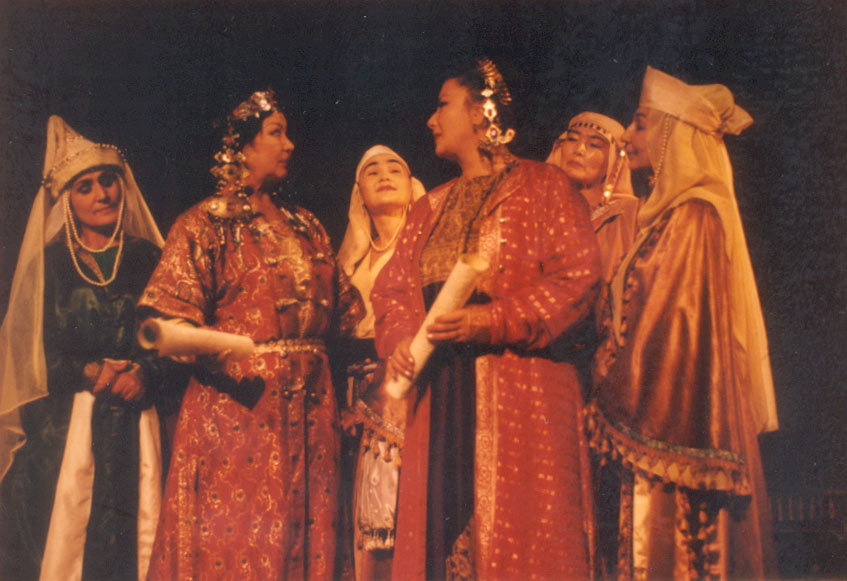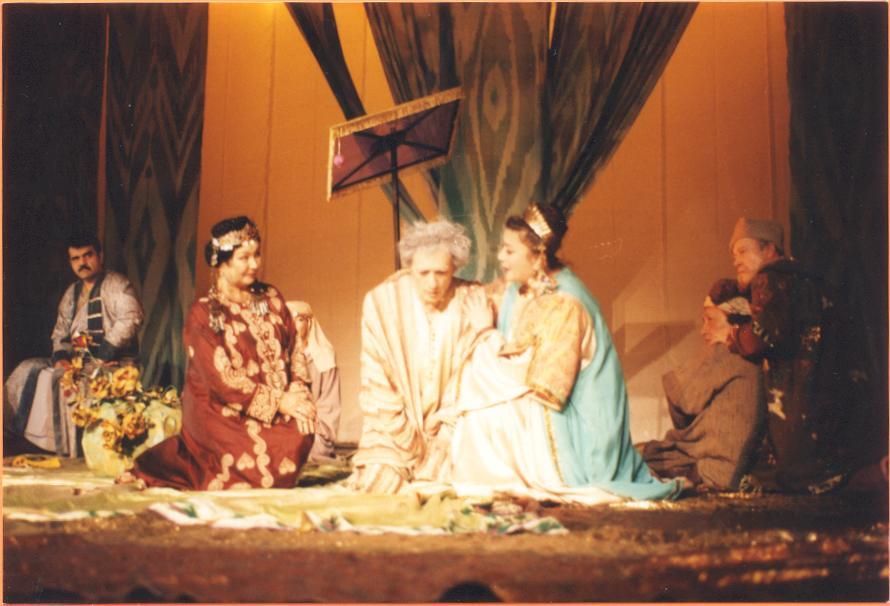A Sufi interpretation of Shakespeare’s text staged in Uzbekistan in the Uzbek language.
Uzbekistan is in Central Asia, north of Afghanistan. The Uzbeks are the descendants of Chinggis Khan who converted to Islam in the 1300’s. In the deserts of this country, the Mongolian shaman was absorbed into the role of the dervish, and the shaman’s ecstatic flight transformed to a whirling dance: the way of the Sufi.
The Sufi path is from death to death. King Lear read in the Sufi way exacts a series of punishments on its heroes if they are to ascend. When we think they have suffered enough, when we think they have died, or deserve to die as a mercy, then there is, of necessity, more pain.
Read more.Rumi, the greatest Sufi poet, wrote verses in 1250 that parallel the imagery of Shakespeare’s Lear. Coleman Barks translates it :
The hard rain and wind
are ways the cloud has
to take care of you.
The grief you cry out from
draws you toward union.
We weep God’s rain,
We laugh God’s lightning.
 There is a Sufi idea that life has seven stages, similar
There is a Sufi idea that life has seven stages, similar
to the idea from Shakespeare’s As You Like It:
One man in his time plays many parts,
His acts being seven ages.
A Sufi vision can spy seven souls for Lear in the text. Did Shakespeare know about Sufism? No, never – maybe. because some people in Shakespeare’s time did know. Persian Sufi poetry was known, its ideas transmuted through the filter of the Crusades. Other ideas from Central Asia had been absorbed into European culture without attribution in such disparate phenomena as eyeliner, court jesters, and monasteries. Idries Shah, who wrote the first modern book about Sufism claims it is the secret source for things as English as the Order of the Garter and Morris (from Moorish) Dancing. Is Shakespeare thinking of Rumi? Is Rumi thinking of some yet more ancient wisdom? When a modern day psychologist speaks of seven stages of development, is he thinking of Shakespeare? Or is a journey of seven stages a convincing model of life, and the source for the idea is neither England, nor Vienna, nor Tashkent, but the human condition?
King Lear is one of the defining texts of a European drama culturally specific in its Greek origins. We recognize today that ancient Greece was itself a mixture of Asian and African and European cultures. Staging classic plays in unexpected places tries to locate this collision course of cultures onstage. Lear’s central images: an old man lost in a storm, a daughter wronged by her father, will resonate with audiences as long as there are storms and old men and fathers. As Ezra Pound wrote, that is what it means to be a classic: forever fresh.

Uzbekistan is also the land of the ancient Silk Road. As a post-Soviet independent nation the manufacture and wearing of silk is a part of national identity. The scenery for the production was all silk, including a forty foot square sheet of silk that was waved to create the storm scene. The extraordinary costumes and jewelry are from the period of Tamurlane, the same Tamurlane written about by Shakespeare’s Elizabethan contemporary Christopher Marlowe.
The production was recorded and televised on Uzbek television. Photographs above are from the storm scene. Photographs below: Regan and Goneril facing off.



